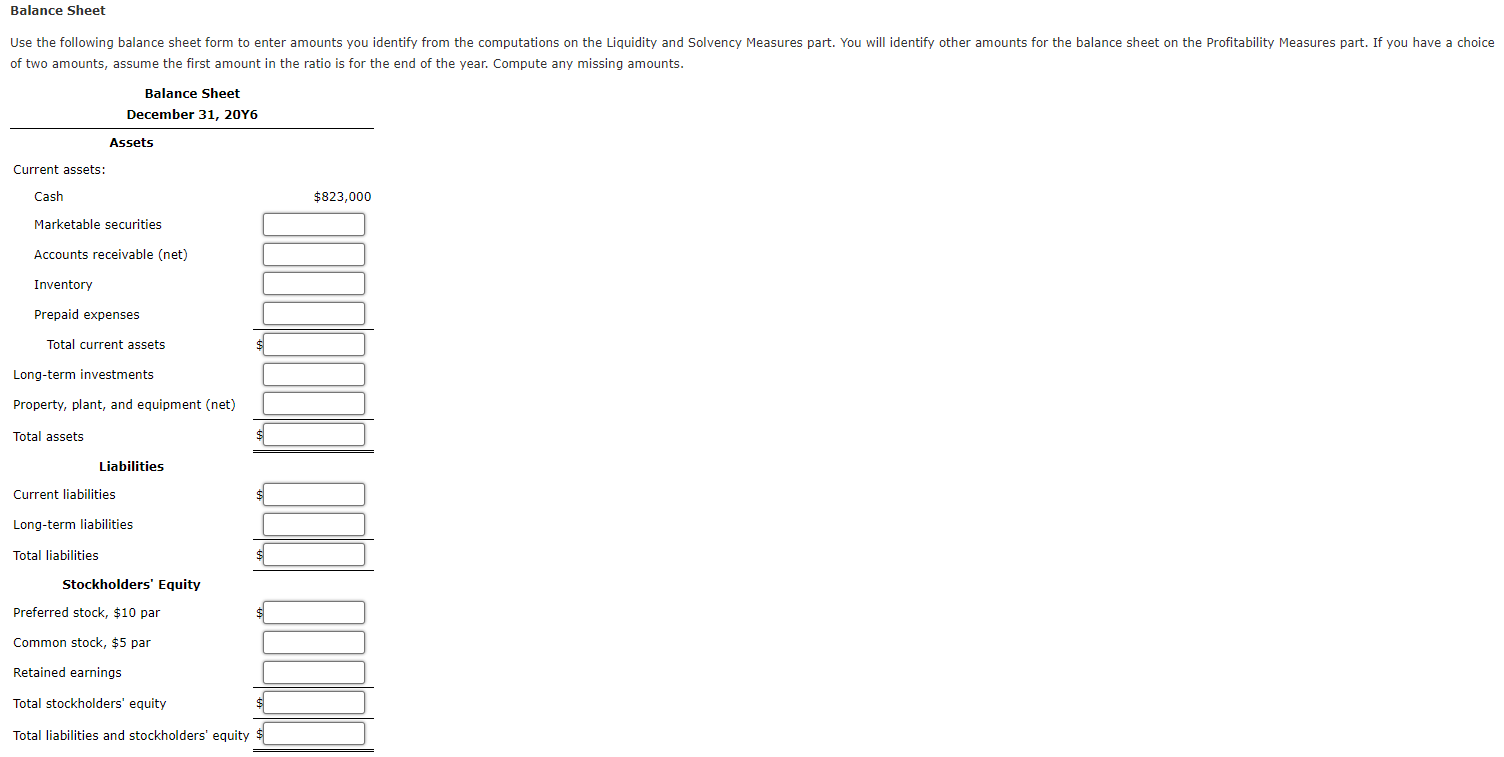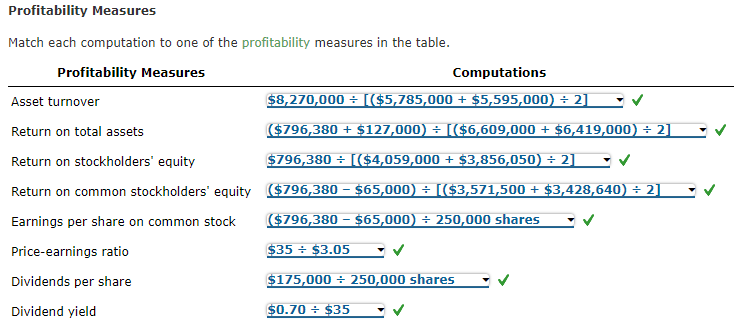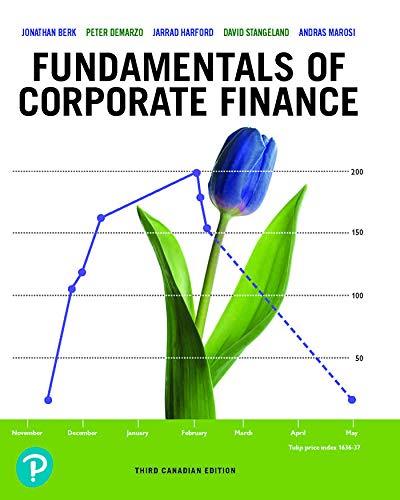Need help on Liquidity and solvency measures




Mastery Problem: Financial Statement Analysis Liquidity and Solvency Measures Your friend, another accountant, has bet you that with your knowledge of accounting and just the computations for common analytical measures, you can figure out many aspects of a company's financial statements. You take the bet! Match each computation to one of the liquidity and solvency measures in the table. (Hint: Begin by looking for simple computations and identifying the amounts in those computations. Look for other measures that use those amounts.) Liquidity and Solvency Measures Computations Working capital $3,095,000 - $860,000 Current ratio $3,095,000 + $860,000 Quick ratio $1,866,000 - $860,000 Accounts receivable turnover $8,270,000 = [($714,000 + $740,000) = 2) Number of days' sales in receivables ($714,000 + $740,000) = 2: $8,270,000 = 365) Inventory turnover $4,100,000 = $1,072,000 + $1,100,000 : 2 Number of days' sales in inventory [$1,072,000 + $1,100,000) = 2] = ($4,100,000 = 365) Ratio of fixed assets to long-term liabilities $2,690,000 - $1,690,000 Ratio of liabilities to stockholders' equity $2,550,000 = $4,059,000 Times interest earned ($983,100 + $127,000) = $127,000 Balance Sheet Use the following balance sheet form to enter amounts you identify from the computations on the Liquidity and Solvency Measures part. You will identify other amounts for the balance sheet on the Profitability Measures part. If you have a choice of two amounts, assume the first amount in the ratio is for the end of the year. Compute any missing amounts. Balance Sheet December 31, 2016 Assets Current assets: Cash $823,000 Marketable securities Accounts receivable (net) Inventory Prepaid expenses Total current assets Long-term investments Property, plant, and equipment (net) Total assets Liabilities Current liabilities Long-term liabilities Total liabilities Stockholders' Equity Preferred stock, $10 par Common stock, $5 par Retained earnings Total stockholders' equity Total liabilities and stockholders' equity $ Profitability Measures Match each computation to one of the profitability measures in the table. Profitability Measures Computations Asset turnover $8,270,000 = [($5,785,000 + $5,595,000) = 2] Return on total assets ($796,380 + $127,000) = [($6,609,000 + $6,419,000) = 2] Return on stockholders' equity $796,380 = [($4,059,000 + $3,856,050) = 2] Return on common stockholders' equity ($796,380 - $65,000) = [($3,571,500 + $3,428,640) + 2] Earnings per share on common stock ($796,380 - $65,000) = 250,000 shares Price-earnings ratio $35 + $3.05 Dividends per share $175,000 + 250,000 shares Dividend yield $0.70 + $35 Comparative Income Statement Use the following comparative income statement form to enter amounts you identify from the computations on the Liquidity and Solvency Measures part and on the Profitability Measures part. Compute any missing amounts and complete the horizontal analysis columns. Enter percentages as decimal amounts, rounded to one decimal place. When rounding, look only at the figure to the right of one decimal place. If 5, round up. For example, for 32.048% enter 32.0%. For 32.058% enter 32.1%. Comparative Income Statement For the Years Ended December 31, 2046 and 2045 Increase/(Decrease) 2016 2015 Amount Percentage Sales $7,277,000 % Cost of goods sold (3,444,000) % Gross profit $3,833,000 $ % Selling expenses $(1,455,400) $ % Administrative expenses (1,240,500) (1,104,500) % Total operating expenses $(2,559,900) % Operating income $1,273,100 % Other expense (interest) (120,600) % Income before income tax expense $1,152,500 % Income tax expense (180,720) % Net income $971,780 %










